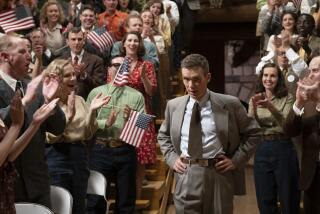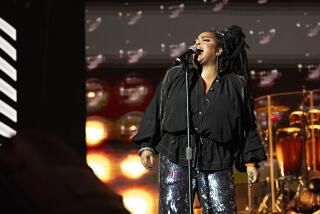Star-spangled celebrations planned for anthem’s 200th anniversary
WASHINGTON -- “The Star-Spangled Banner” -- familiar to football games, military functions and Olympic medal ceremonies -- turns 200 this year and the celebrations have already begun.
The Smithsonian Institution has unveiled a U.S. Post Office-issued stamp and is planning to display an original manuscript of the song, along side the actual flag that inspired it, during an exhibition beginning June 14, Flag Day.
Smithsonian officials are also organizing a national anthem sing-along in which they hope hundreds of thousands of Boy Scouts, local choirs and other Americans will participate, possibly entering the Guinness Book of World Records. India holds the record for simultaneously singing a national anthem, with 120,000 participants.
The song was scribbled down by Francis Scott Key in the dawn of the battle at Ft. McHenry, a decisive fight in the War of 1812 that came a few weeks after the British had burned down the White House and Capitol in Washington.
After 25 hours of bombardments, Key, a Washington lawyer aboard a British ship to negotiate the release of a U.S. sergeant, squinted through the haze to find out who had won.
He finally saw the 30-by-42 feet garrison flag that inspired him to jot down a poem in honor of freedom and victory. The most powerful navy in the world had been defeated by an army of ragtag soldiers and volunteers from Baltimore.
The song was set to the tune of an 18th century drinking song and quickly circulated among the public and into military ceremonies until President Hoover signed it into law as the national anthem in 1931.
The original “Star-Spangled Banner” flag was made by a modest Baltimore seamstress, Mary Pickersgill, along with several family members and a 13-year-old African American indentured servant, for a little more than $400. It was so big that she had to move the operation from her home to a local brewery.
But before becoming a jewel of the Smithsonian in 1907, the flag was owned by Ft. McHenry’s Lt. Col. Armistead, whose family later distributed fragments to friends and officials. The 15th star is still missing.
Historian Lonn Taylor discovered one such fragment in an old historical pamphlet at a Massachusetts library. “I was the first person since 1876 to check that pamphlet out and the fragment literally fell out of my lap,” he said in an interview.
Ft. McHenry will be organizing its own celebrations, including reenactments of the battle. Ft. McHenry Superintendent Tina Orcutt hopes it will be an occasion to teach the public about the battle that inspired the national anthem.
“It’s important for us to understand where we come from. It helped shape who we are as a people,” she said.
More to Read
Sign up for Essential California
The most important California stories and recommendations in your inbox every morning.
You may occasionally receive promotional content from the Los Angeles Times.










